How to measure for roller blinds - expert tips for sizing up windows for a perfect fit
Follow these failsafe tips and tricks to ensure accurate results when measuring up windows
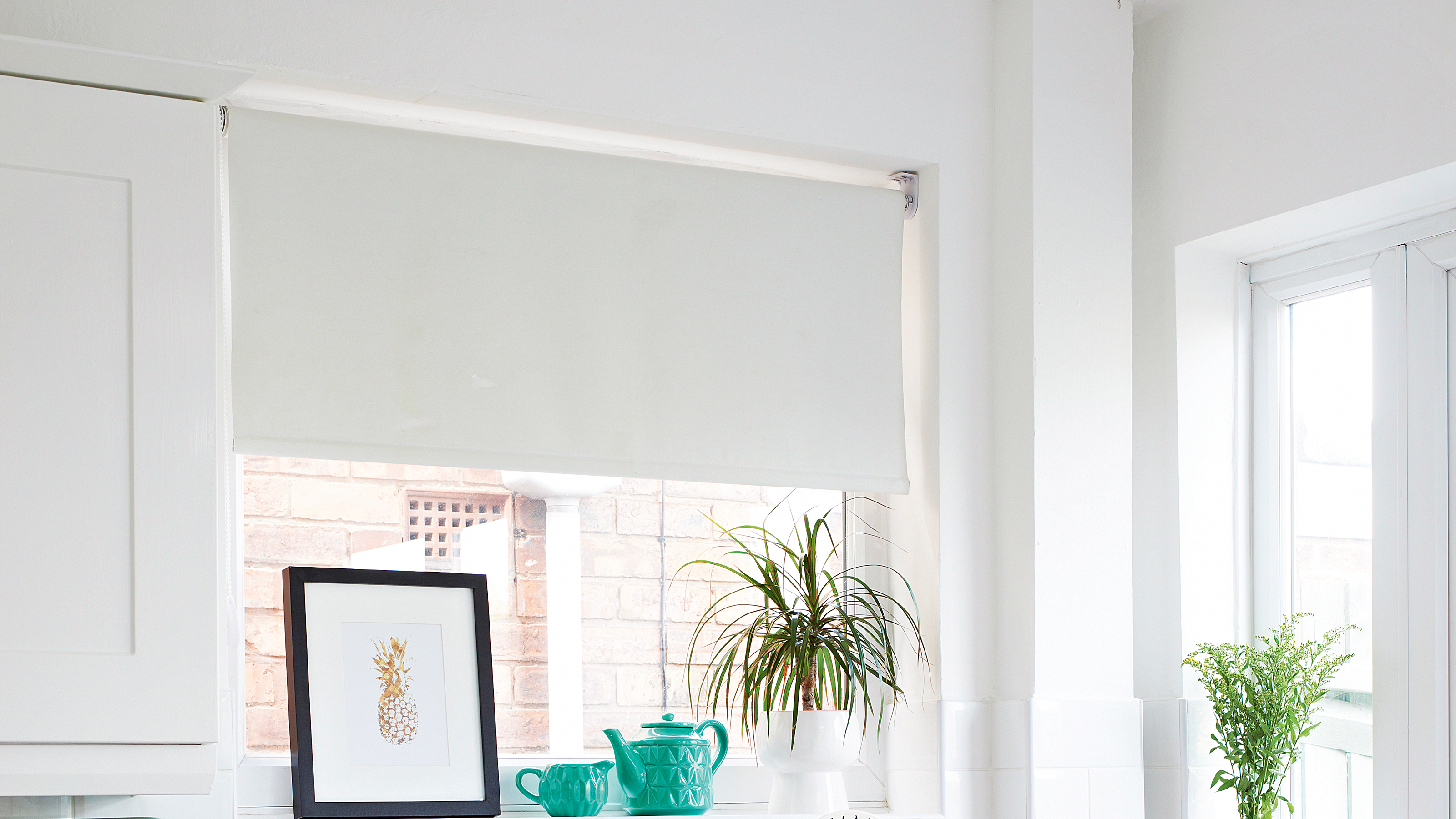

Neat, stylish and affordable, roller blinds are the perfect choice for anyone wanting a hassle-free window treatment that is quick and easy to fit at home yourself. And when it comes to how to measure for roller blinds, it couldn’t be simpler, with just a few key things to consider before you get going.
Roller blinds are a fuss-free smart window dressing idea because they are suitable for pretty much any kind of window. Consisting of a single piece of fabric that wraps around a tubular casing, roller blinds fit either inside or outside a window recess and are easily-operated using a pull cord attached to the bottom of the blind or by a side-winding mechanism.
Another big benefit of roller blinds over other curtain ideas is that they are super-versatile and will suit any room or style of decor. Sheers and neutral roller blinds are neat and discreet for rooms where the window treatment needs to blend into the background, or by choosing bold patterns or vibrant colours, roller blinds can make a great focal point feature in rooms that could use a little extra punch.
How to measure for roller blinds
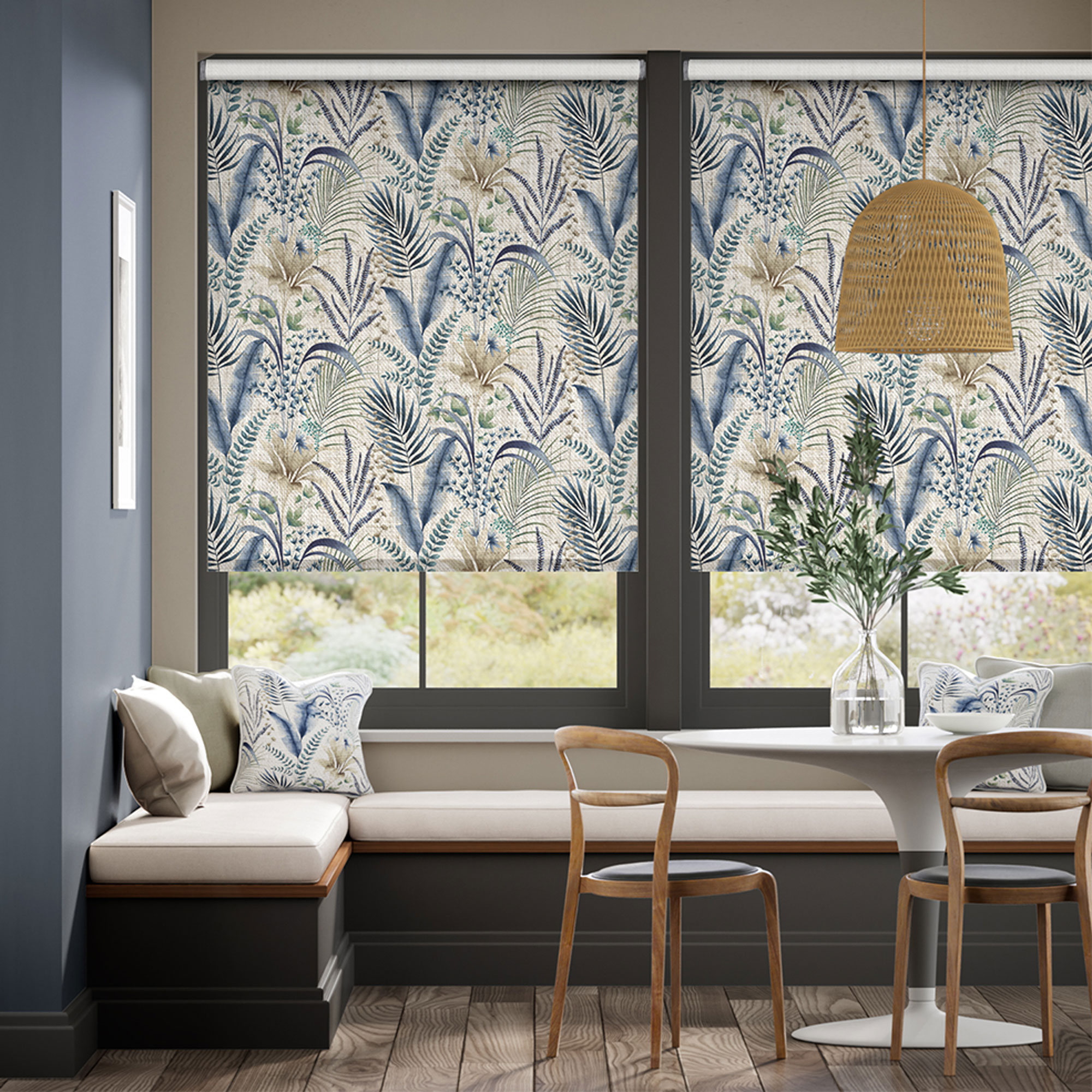
Inky Botanical Blue Stone roller blind, Blinds2go
‘Measuring for new blinds is easier than you might think,’ says Natasha Painter, Head of Marketing at Blinds2go. ‘All you have to do is follow a few simple tips, double-check everything you do and set aside some time to do it.’
‘You don’t need to be an expert to measure up for roller blinds, but we do recommend following or viewing an online guide, as well as always using a metal measuring tape to do the job. Fabric tapes can stretch and warp over time, which will cause inaccuracies.’
1. Assess the window first
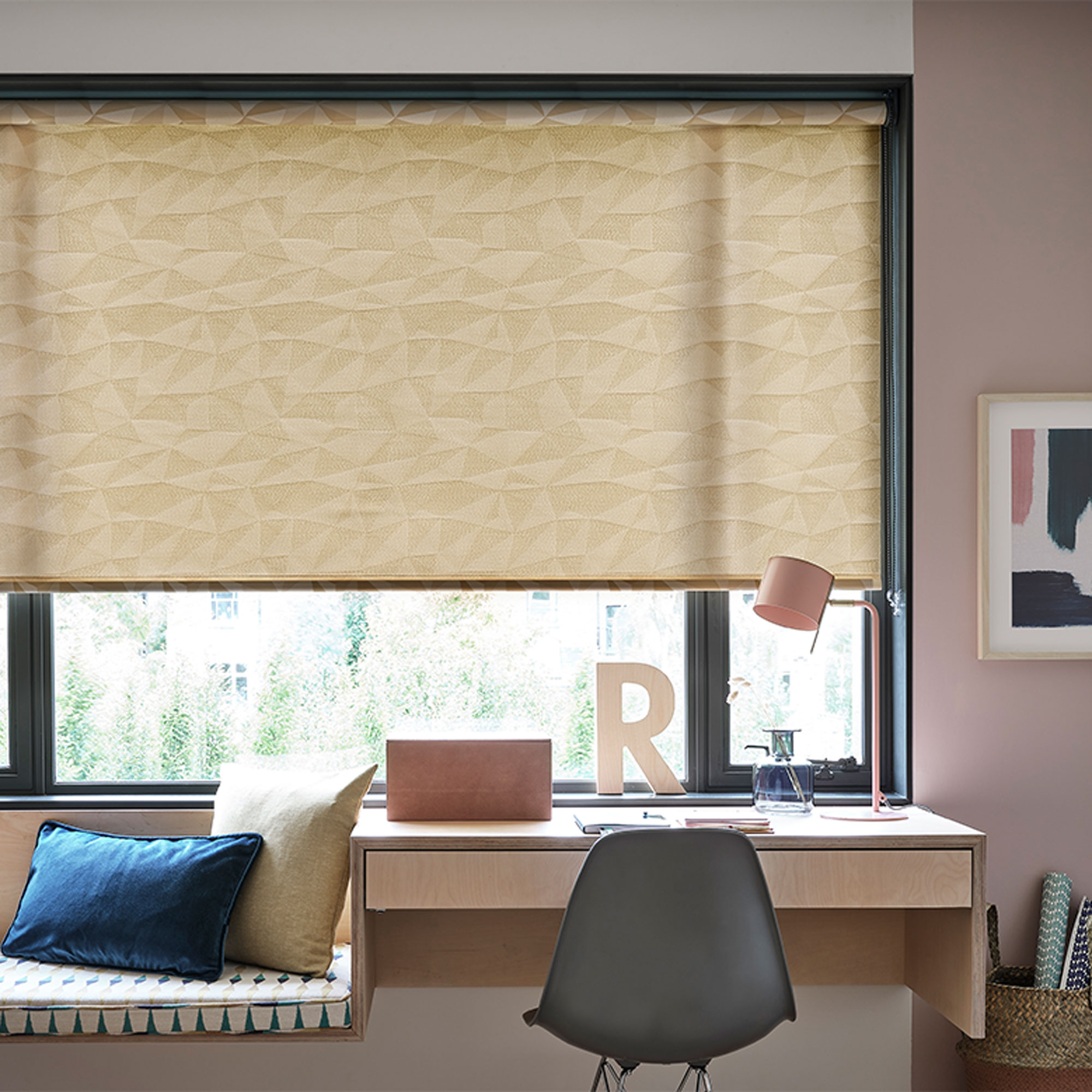
Zara Pineapple roller blind, Hillarys
The biggest consideration, before you start measuring up for your new roller blind is to decide whether the blind is to fit inside your window recess, outside of the recess or on the window frame itself, as the measuring-up instructions will vary slightly for each.
A deep window recess provides space for a roller blind to fit neatly inside so that the blind sits against the glass for a flush finish and drops to just above the sill for a tidy look. However, if the recess is shallow, or you’d prefer to keep the space clear, consider fitting the blind outside of the window recess and fixed on the wall above, so that the blind will cover the whole window and recess area completely.
Sign up to our newsletter for style inspiration, real homes, project and garden advice and shopping know-how
‘When you’re making this decision, try to think about how the blind will fit in your interior,’ says Amy Wilson at 247 Blinds. ‘If you’re considering fitting the blind inside the recess, look out for any obstructions such as window handles or photo frames on the sill that may get in the way. If fitting outside the recess, look out for radiators beneath your window, which could affect the way the blind hangs. Once you’ve figured out which way you want to hang your roller blind, you can start measuring.’
2. Measuring for a roller blind inside a window recess
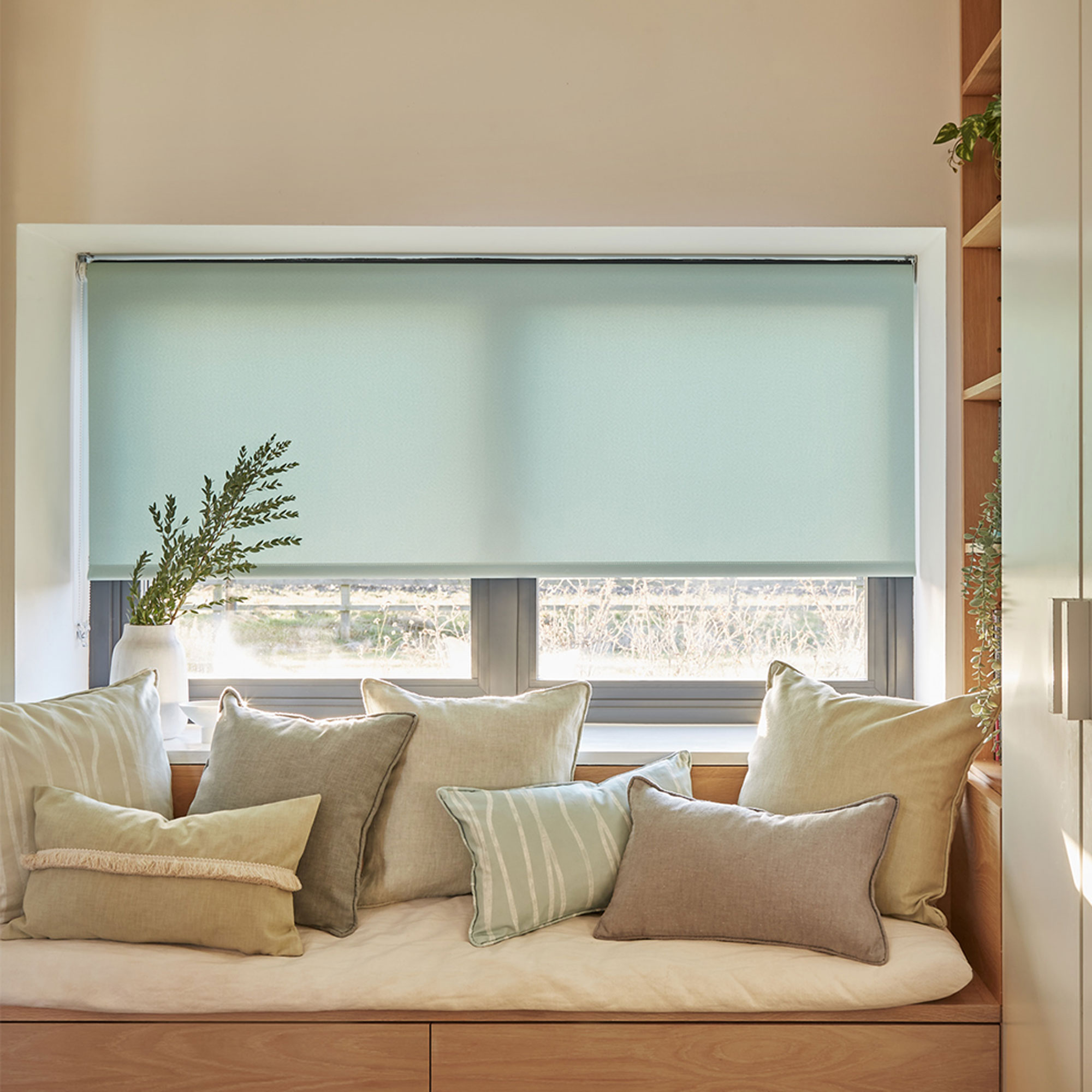
Calm Living roller blind, Hillarys
Roller blinds that fit inside a window recess are also known as ‘inside recess’ or ‘top fix’ blinds. When ordering, you’ll need to supply the blind manufacturer with the width and drop of the recess, from top to bottom and wall to wall. Deductions will need to be made to allow clearance space either side so that the blind doesn’t drag on the wall, but the manufacturer will generally make these deductions to ensure a snug fit. Do double check this first though.
Using a steel measuring tape, first measure the width of the window recess. Take three width measurements, starting at the top, then measuring across the middle of the window and lastly across the bottom, using the edges of the window recess as your guide. When you have three measurements, use the smallest as your final figure, this will be the width of your blind.
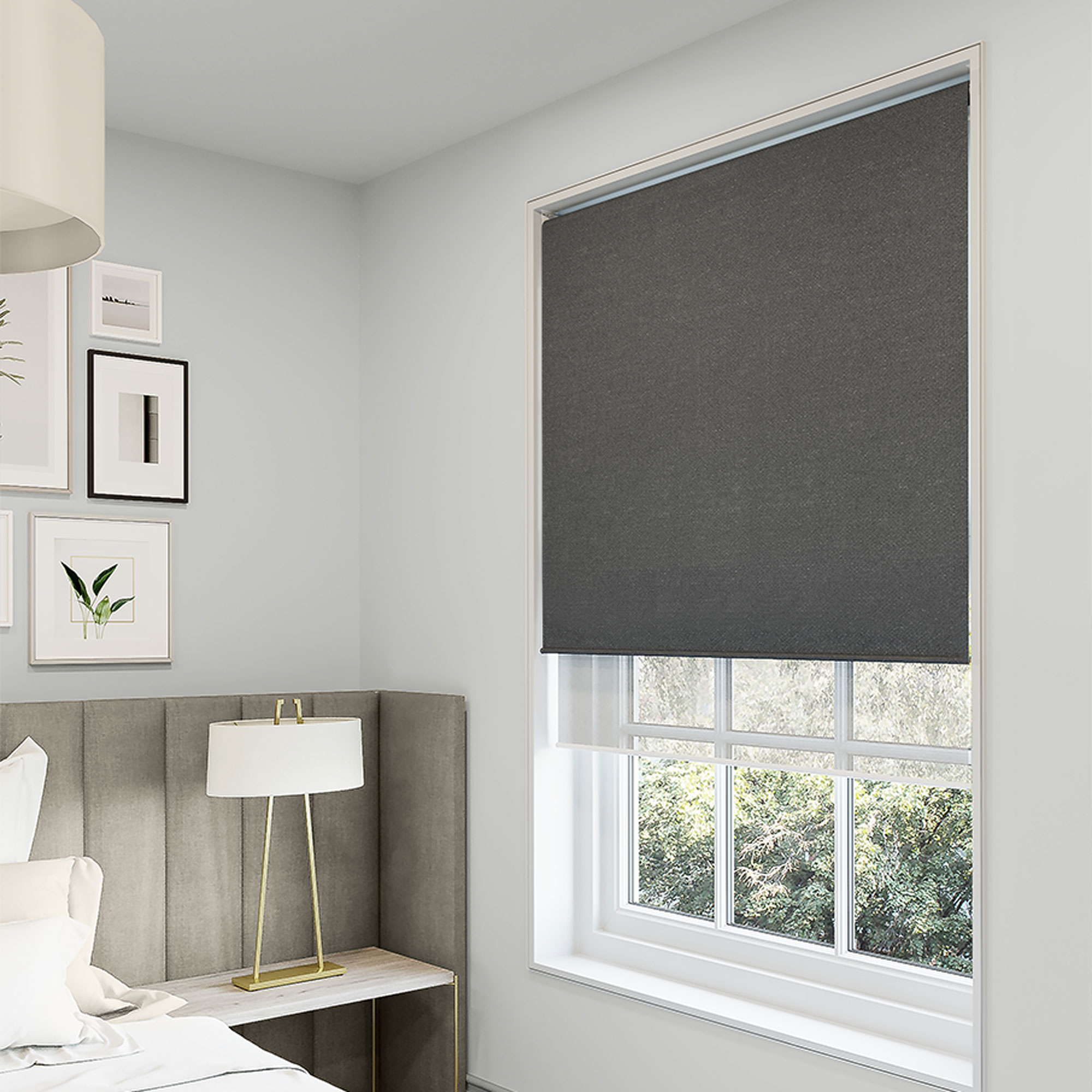
Double roller blind, Swift Direct Blinds
Next measure the height of your window. This will be from the top lintel to the window sill. Measure on the left, right and middle. Then choose the smallest measurement, this will be your drop height.
Measuring the width and height in three places ensures that your blinds will be an accurate fit. Walls and window recesses are rarely as straight or square as they seem, so using the smallest measurement ensures that blinds won’t be too big for the space.
3. Measuring for a roller blind outside a window recess
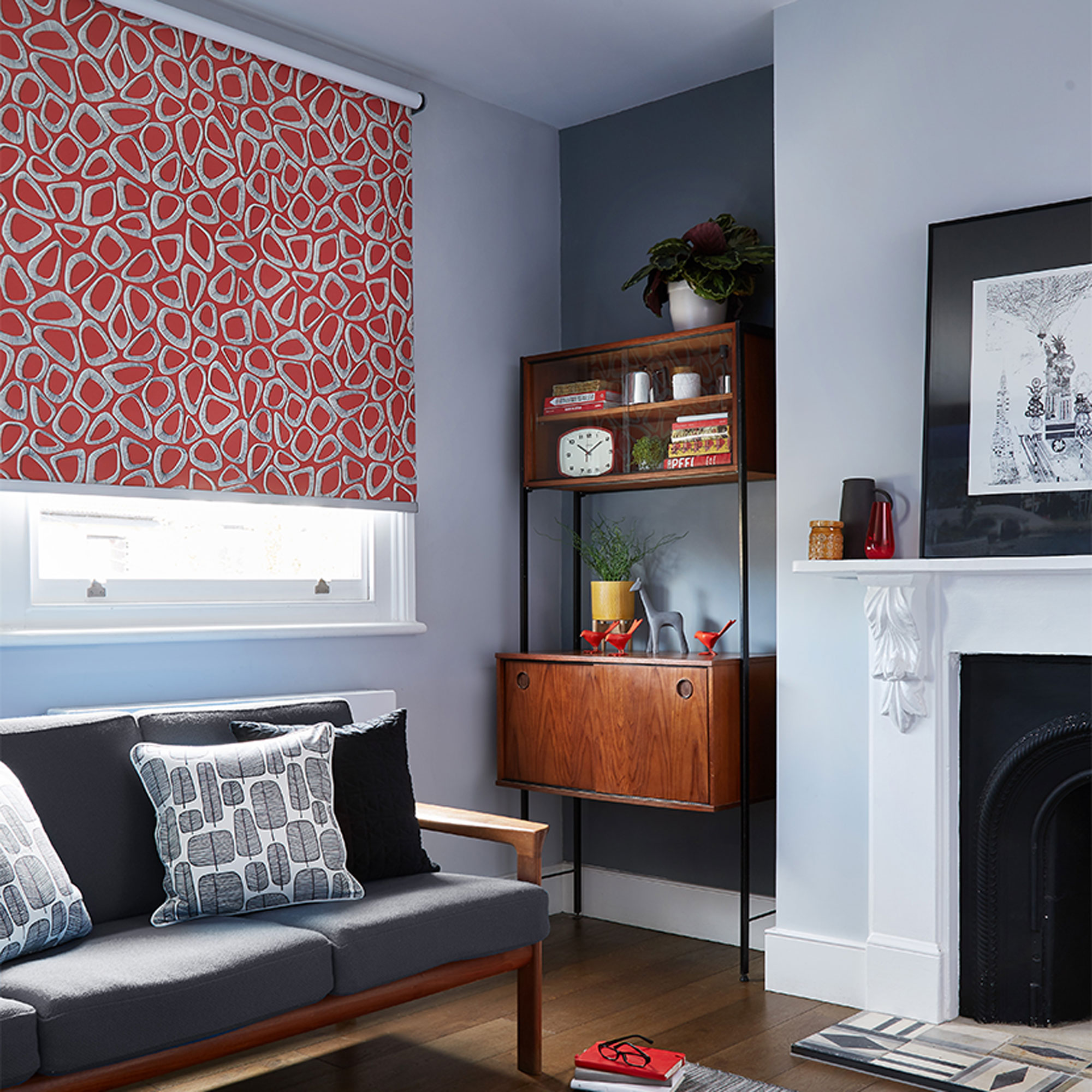
Roller Pebbles blind, Miss Print
Hanging blinds outside a recess requires a bracket or track to be fitted above the window, fixed directly to the wall or onto a wooden batten more than 5cm above the window frame.
Roller blinds positioned outside the window recess are known as ‘exact fit’ or ‘face fixing’ blinds. An exact fit blind means that the blind manufacturer won’t make any deductions to the width or drop measurements. The size you give will be the exact size your blind is made to.
For blinds that hang outside the recess, measure the height and width but be sure to add some overlap to reduce light leakage. The overlap should be about 70mm at the top and bottom and 50mm each side. This is especially important if you've opted for roller blinds over other bedroom curtain ideas.
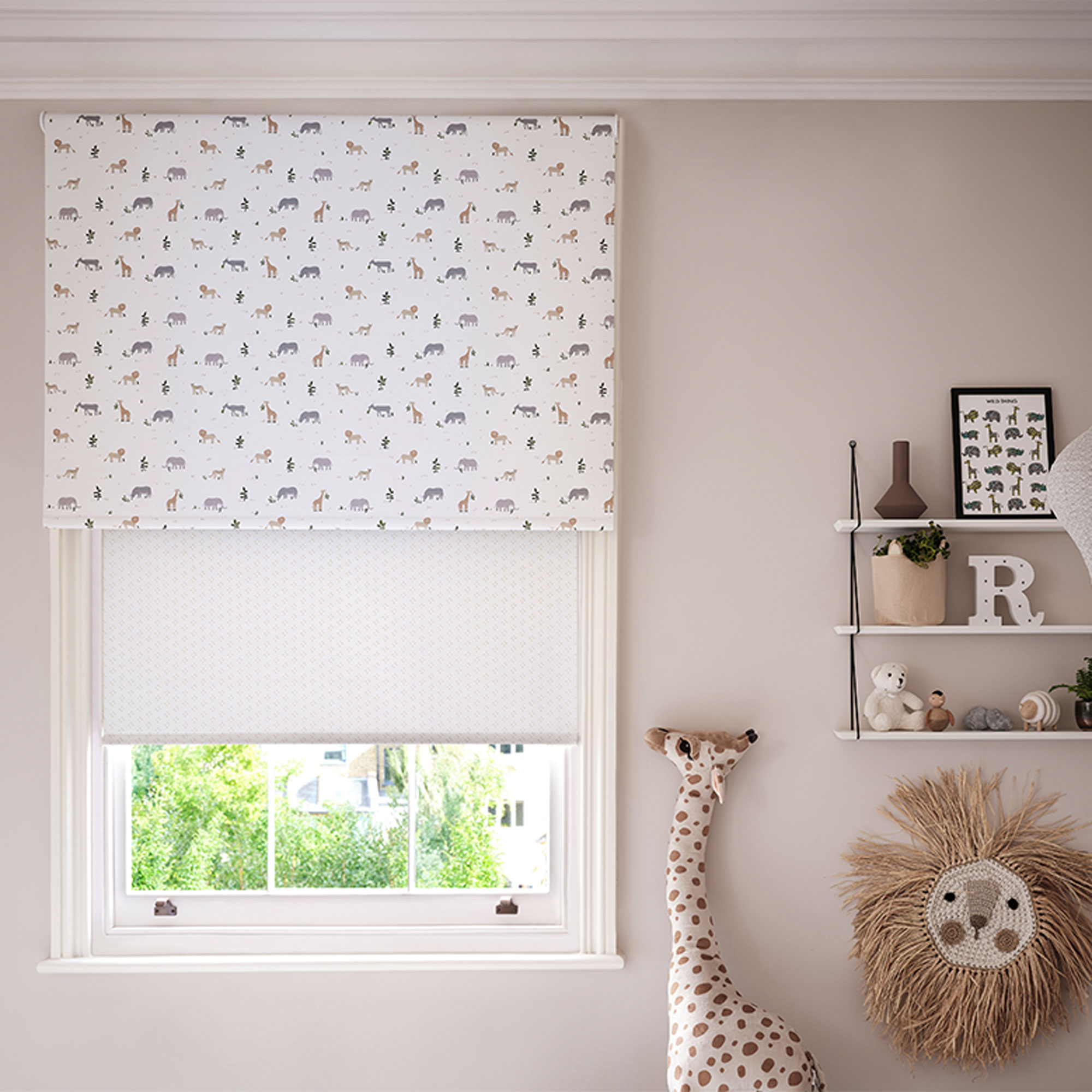
Safari Jungle and Reagan Sunshine roller blinds, Hillarys
Measure up by starting and finishing where you want the edges of your blind to sit, taking three measurements across the width of the window, from the top, the middle and the bottom. The smallest number will be your final width measurement.
Once you have your width, measure from the top of where your bracket will sit, to where you want the blind to drop to. Measure the drop at three equal points across the window and note the longest size - this will be your final drop measurement.
‘For the bottom overlap, if your windowsill protrudes more than 5cm, you should stop your blind at this point,' says Kate Duckworth, Senior Digital Marketing Manager, Swift Direct Blinds. ‘Keep in mind that the further past the window opening you measure, the better the light exclusion will be. It's important to factor in any obstructions whilst measuring and keep an eye on any handles, radiators or design features that may impact the way the blind hangs.’
4. Fixing a roller blind to the window frame
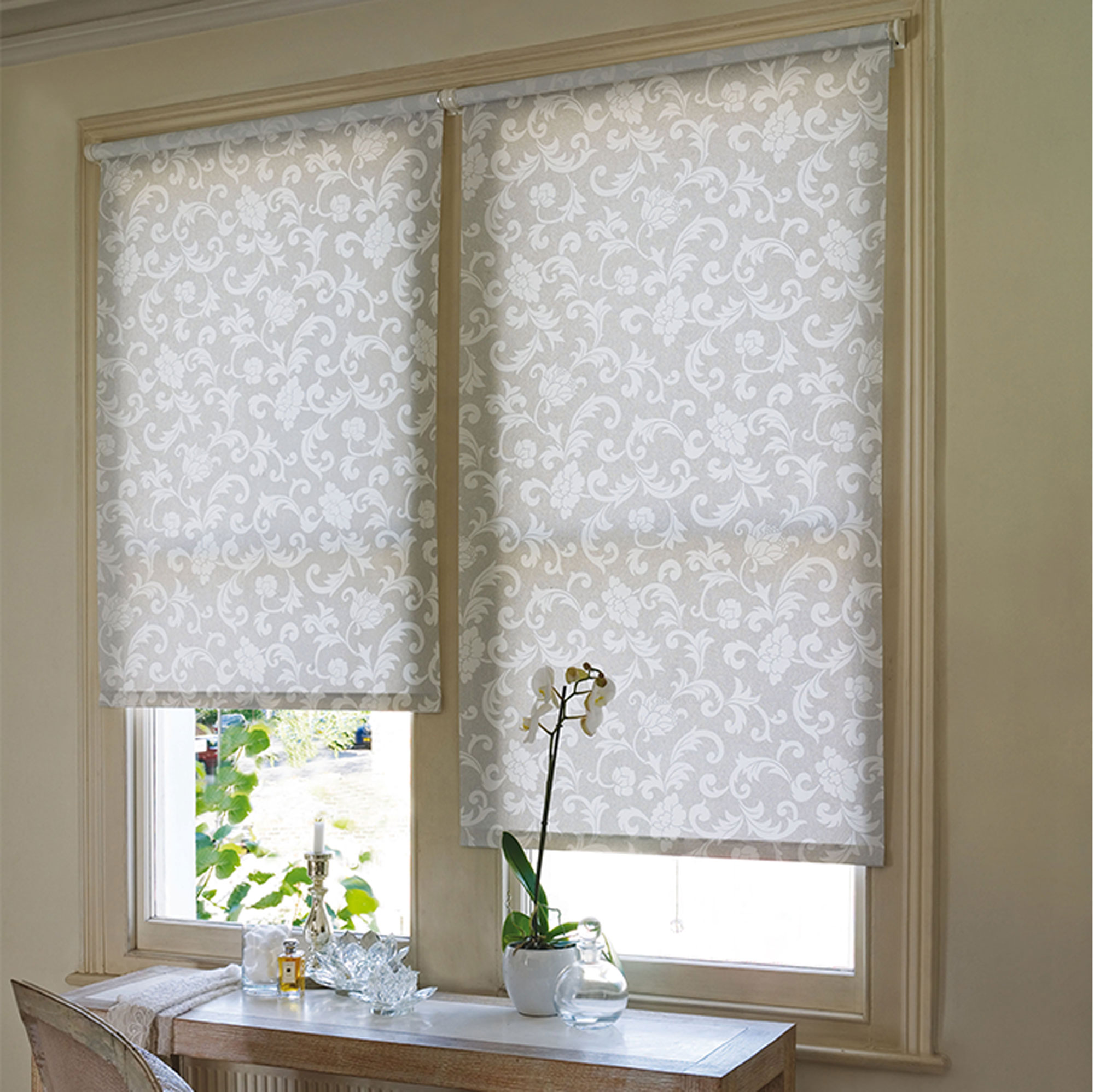
Luxury silver floral patterned roller blinds, English Blinds
When it comes to a wooden framed window without any recess, another option to consider is fixing a roller blind directly to the frame, which gives a neat flush finish. Only one width measurement will need to be taken, but do double-check this as the blind will be made to an exact fit (meaning that the blind manufacturer won’t make any deductions). For the blind’s drop, measure from the top of the window frame to 50mm below the windowsill - or stop at the sill if it protrudes more than 5cm.
5. Make allowances for tricky windows
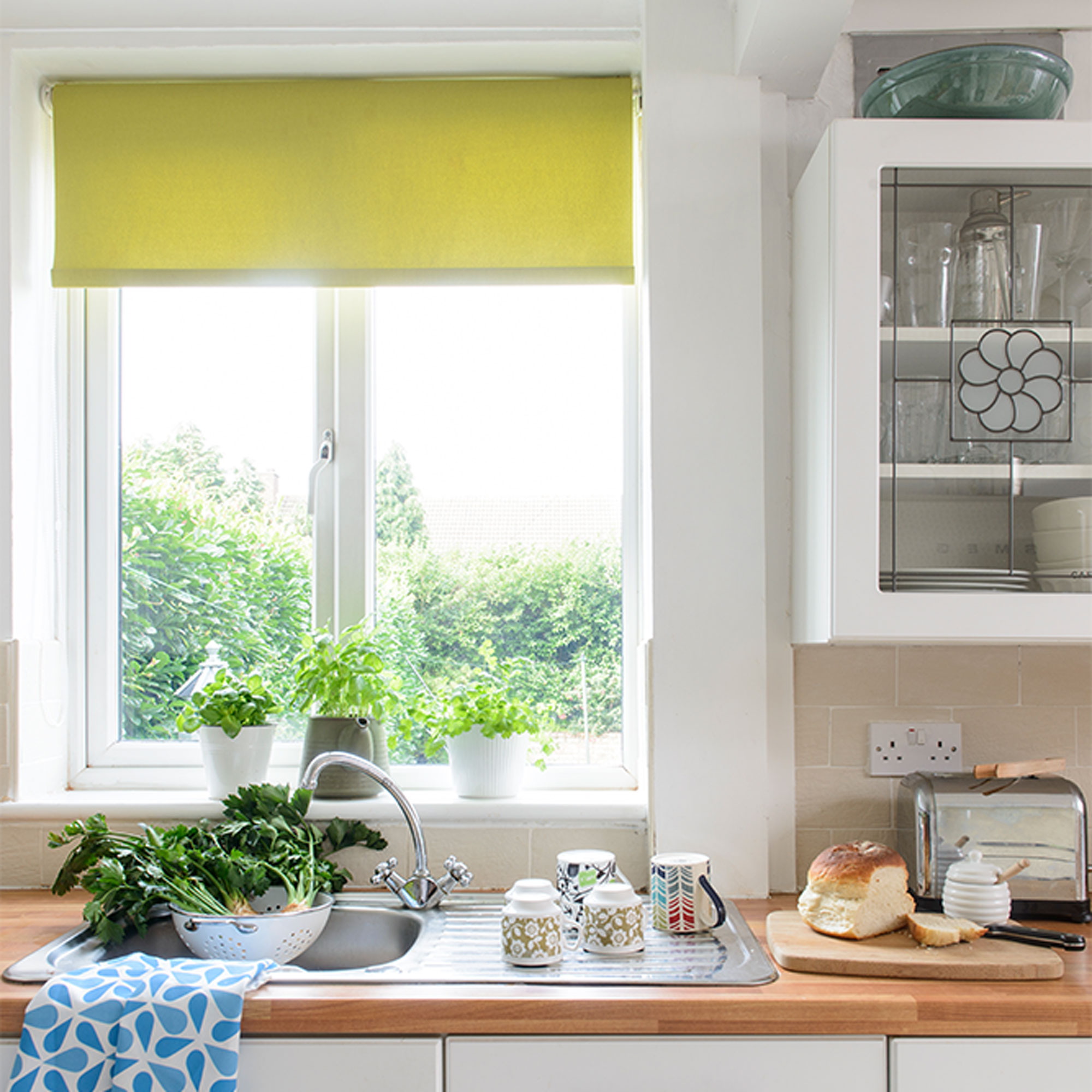
With awkwardly-shaped windows or windows in tiled spaces, such as kitchens and bathrooms, adjustments might need to be made when measuring to work around any obstacles.
‘If you have tiles part-way up the window recess (as is often the case in kitchens and bathrooms) then the space between them is most likely to be the narrowest point in the recess,’ says Natasha Painter at Blinds2go.
‘Measure at the top of the recess and then between the tiles. Compare the two measurements, if the difference is less than 25mm, use the measurement from the top of the recess. If it isn’t, then use the width between the tiles. You will need to top-fix or face-fix your blind if this is the case.’
6. Fit multiple roller blinds at bay windows
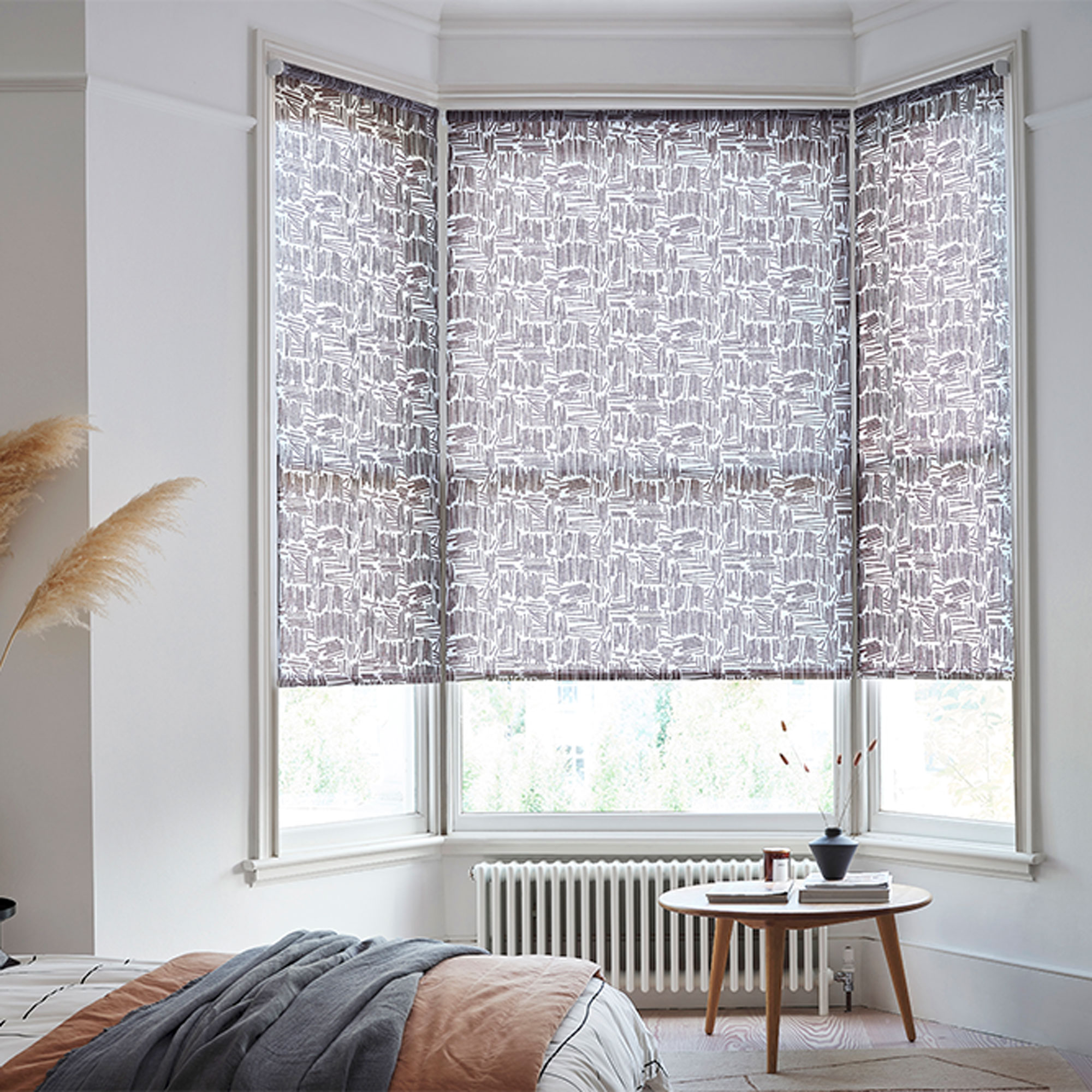
Matchsticks Mono roller blinds, Hillarys
Roller blinds are a surprisingly effective bay window idea. However, you will need to take care when measuring for them.
‘When fitting Roller blinds into a bay or box style window, you’ll achieve the best finish by putting separate blinds into each individual section of your bay,’ says Yvonne Keal, senior product manager at Hillarys, ‘but because made-to-measure roller blinds fit each frame like a glove, the overall look is smart, clean and streamlined.’
‘The beauty of fitting individual blinds to each window pane is that it gives you flexible control over light. You can position your blinds at different heights in the bay to control the sun's glare throughout the day,’ adds Yvonne.
‘Measuring up for roller blinds for bay windows is slightly more trickier,’ says Kate Duckworth, Senior Digital Marketing Manager, Swift Direct Blinds. ‘There are specific measuring instructions for bay windows, as you need to take into account the angles and number of panels on the window as this may impact how the blinds hang due to overlapping.’
7. Think about child safety
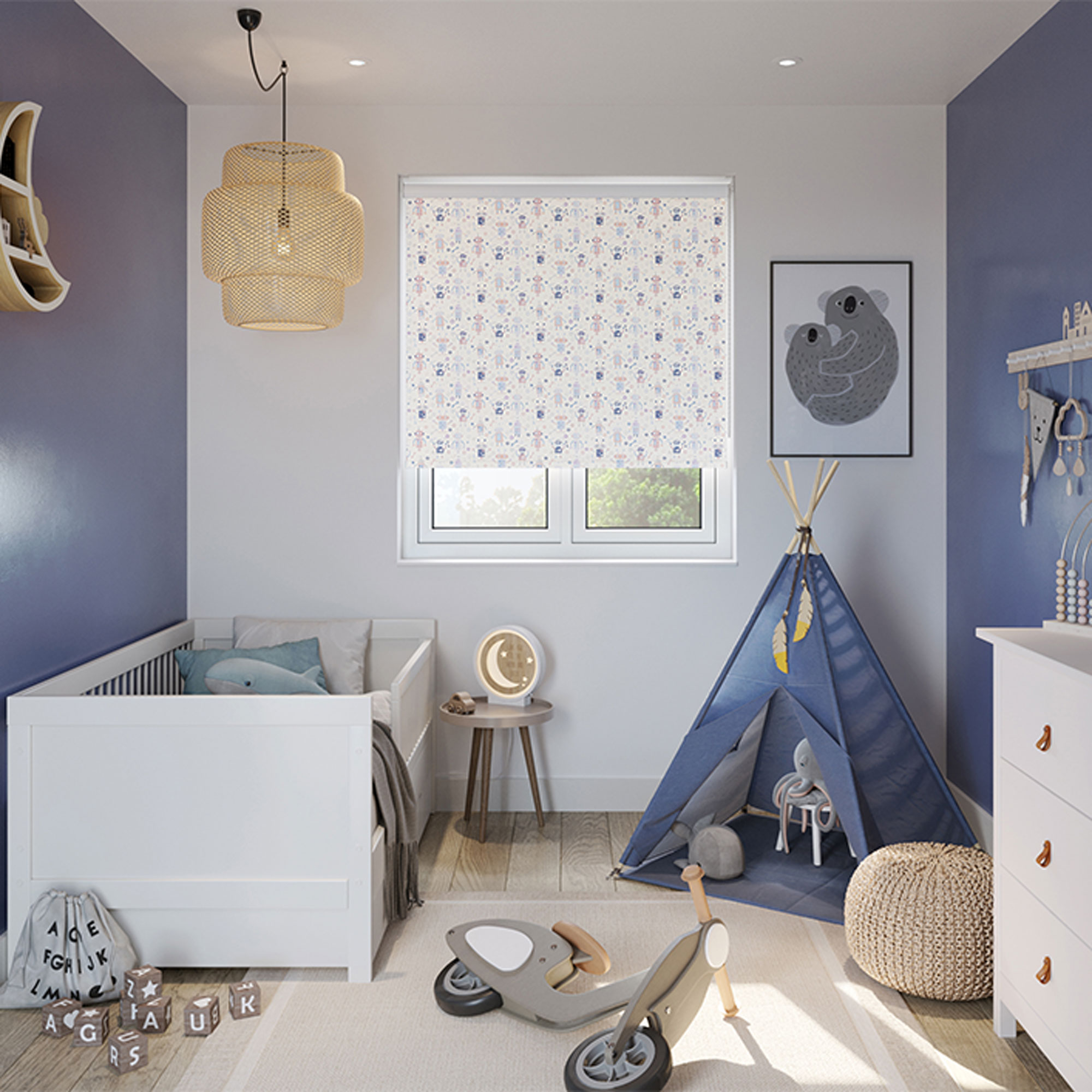
Robots blackout roller blind, 247 Blinds
When it comes to window blinds, it is now a legal requirement that safety devices are fitted when blinds with looped cords and chains are installed, even in homes without children, as little ones may visit from time-to-time. In fact, if you move home and leave your blinds, you have an obligation to make sure they are legally safe.
There are two safety devices. The first is a safety hook, for blinds that have a looped control chain, such as rollers, verticals and certain Roman blinds. The chain will be held permanently taut and under constant tension by the safety hook. Alternatively, a safety cleat for blinds with control cords, such as Romans, Venetians and pleated blinds, fixes to the wall with the cords of these blinds wrapping around the cleat when the blind is opened. It keeps the cords tidy and neat, but most importantly, out of the reach of children.
Blinds with a cleat must be fitted at a minimum height of 1.5m, with cleats fitted no lower than 1.5m too. Hooks must be fitted at the maximum distance from the control mechanism. In addition, there are guidelines when fixing the length of control chains for these types of blinds that ensure the chains will not be too close to the ground.
8. Choosing the perfect pattern
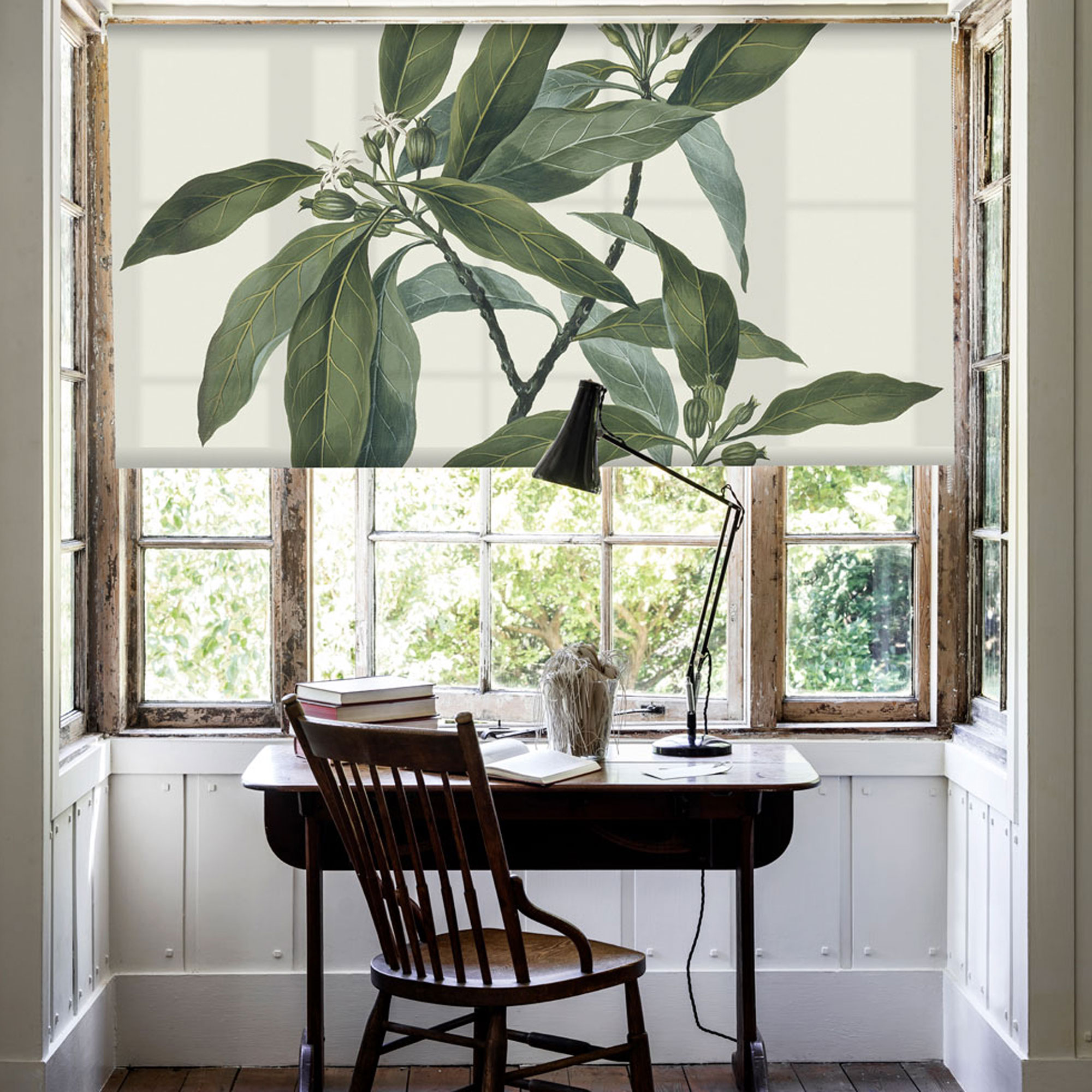
Roller blind in Timonius Timon by James Miller, Natural History Collection, Surface View
Choice of fabric when picking a roller blind can make a huge difference to its look and overall effect in your room. Neutral fabrics and small-scale patterns can blend into the background so are a good choice if you’re after a low-key look that allows the rest of the decor to take centre stage.
Alternatively, in small spaces that lack oomph or in larger rooms that could use a focal point, choosing a large-scale design or bold colour is an easy way of adding some wow to a plain space. When choosing large-scale fabrics, be mindful of the positioning of a pattern and make sure that the blind size is large enough to show it off fully.
9. Pick a practical finish
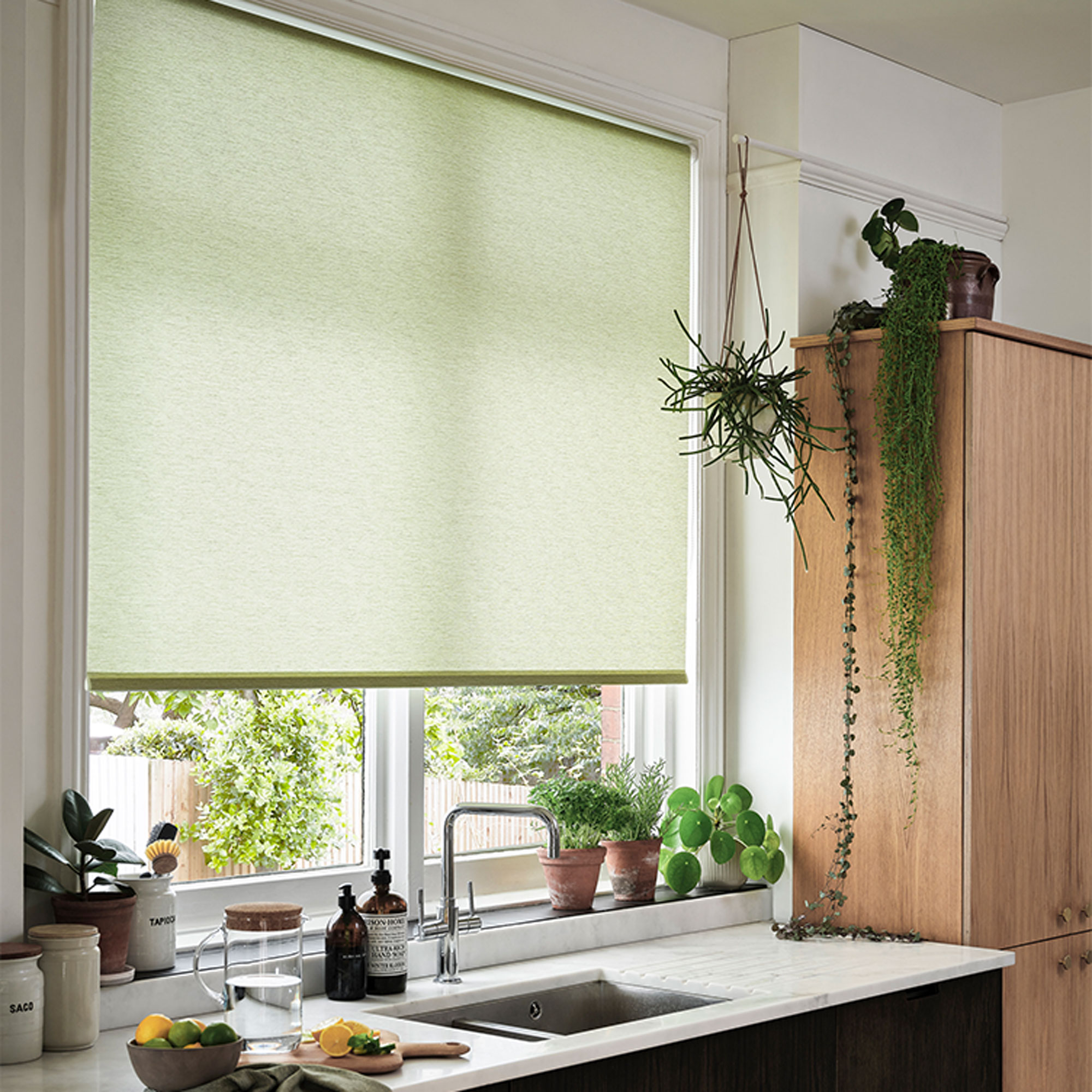
Conscious Lime roller blind, Hillarys
Consider the position of the window when choosing a window treatment for your kitchen ideas. Fussy curtains are a fire risk, while heavyweight fabrics retain cooking smells and can be damaged by steamy conditions. If your window is above a sink or inclose proximity to the cooking area, a neat roller blind is a practical option in a moisture-resistant and wipe-clean finish.
‘Kitchen and bathroom blinds need to be able to stand the heat, the wet and the spills and stains that are part and parcel of every busy home,’ says Yvonne at Hillarys. ‘One of the most versatile blind types, roller blinds come in a range of finishes that make them supremely practical, with blackout, moisture-resistant and flame retardant options that are ideal for use in different environments.’
10. Try an 'easy-up' option

Click 2Fit Palazzo chenille grey roman blind, Blinds 2go
For the ultimate in easy-fit blinds, consider Blinds 2go’s new Click2Fit range. The new tool-free headrail system makes fitting the blinds super-simple, with a clever tension rod that fits inside the recess of the window allowing it to be installed quickly, easily and without any mess. Just click it into place, job done.
A great option for rental properties or rooms where you might not want to put up a permanent fixing, the blinds are available in Roman and thermal pleated blind options and a range of fabrics and colour choices.

Lisa is a freelance journalist who has written about interiors for more than 25 years. Previously editor of Style at Home magazine, she has worked on all the major homes titles, including Ideal Home, Country Homes & Interiors, 25 Beautiful Homes and Homes & Gardens. She has covered pretty much every area of the home, from shopping and decorating, crafts and DIY to real homes and makeovers and now regularly writes gardening stories for Ideal Home.